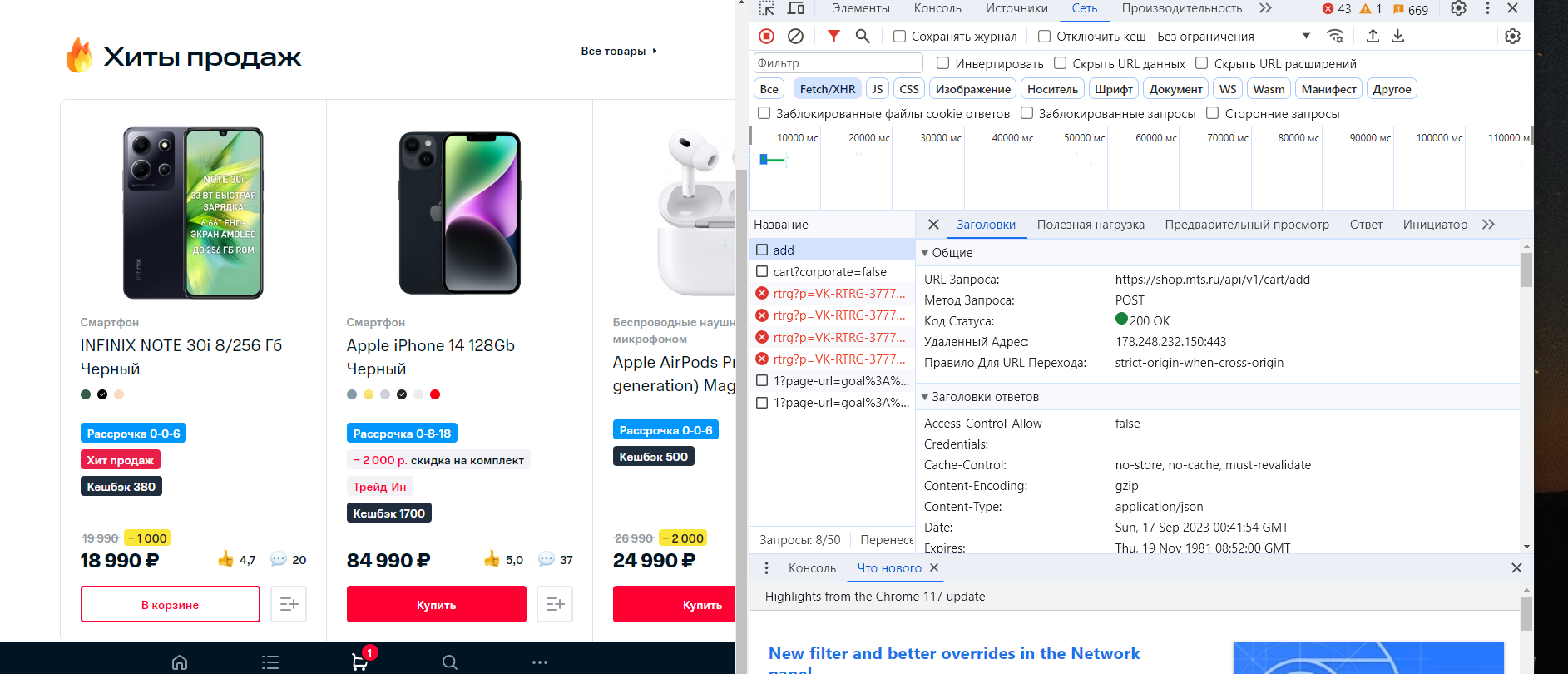
// click on button every 30s
setTimeout(() => {
document.querySelector("Селектор твоей кнопки").click();
}, 30 * 1000);
const LIMIT = 10;
const getProducts = async (offset, limit) => { ... }
function App () {
const [offset, setOffset] = useState(0);
const [products, setProducts] = useState([])
useEffect(() => {
getProducts(offset, LIMIT).then(products => setProducts(v => [...v, ...products]))
}, [offset]);
return <RenderProducts onScroll={() => { // increment offset }} />
}// store.ts
const LIMIT = 30;
export const $products = map({
offset: 0,
products: [],
isLoading: true
})
onMount($products, () => {
fetchProducts()
})
const fetchProducts = action($products, "fetchProducts", async store => {
const { products, offset } = store.get();
// TODO: add error handling
store.setKey("isLoading", true);
const newPartOfProducts = await api.getProducts(offset, LIMIT);
store.setKey("products", [...products, ...newPartOfProducts ]);
store.setKey("isLoading", false);
});
const incrementOffset = action($products, "incrementOffset", store => {
const { offset } = store.get();
store.setKey("offset", offset + LIMIT);
fetchProducts()
})
export const $productsMutations = { incrementOffset }
// App.tsx
function App () {
const { isLoading, products } = useStore($products)
return (
<Fragment>
<RenderProducts onScroll={$productsMutations.incrementOffset} products={products} />
{isLoading && <LoadingIndicator />}
</Fragment>
)
}


function hexToSignedInt(hex) {
hex.length % 2 !== 0 && (hex = "0" + hex);
const hexAsNumber = BigInt("0x" + hex);
const maximalValue = BigInt(Math.pow(2, hex.length / 2 * 8));
if (hexAsNumber > maximalValue / 2n - 1n) {
return Number(hexAsNumber - maximalValue)
}
return Number(hexAsNumber);
}
const result = hexToSignedInt("FFFFFFFFFFFFCCFF") // -13057n
console.log(result);

Regarding Polaris, basically every model of card is supported as long as it’s running either a Polaris or Baffin core. Lower end cards like the RX 550 may run a Lexa core, meaning no support in macOS.
The only brands you should avoid with the Polaris series would be XFX (460/560 models), PowerColor, HIS and VisionTek as many users have had bootloader and macOS boot issues. Other users have found fixes/workarounds, though nothing consistent. This seems to be caused by having an odd VBIOS that doesn't communicate well with macOS and the only real solution is flashing another VBIOS, which is not ideal for most users.



Определенный игровой монитор с частотой 144 Гц может иметь указанную скорость отклика пикселя GtG (от серого к серому) 4 мс, однако это всего лишь маркетинговые махинации, поскольку на самом деле это не относится к средней скорости перехода пикселя, а скорее к максимально возможной.
Таким образом, пиксели могут перейти от 80% серого к 60% серого за 4 миллисекунды, как указано, но , например, им может потребоваться более 30 миллисекунд, чтобы перейти от 0% серого (черного) к 20% серого .
Мониторы с панелью VA, в частности, имеют очень медленные переходы пикселей от темных к серым или ярким оттенкам (время нарастания), что приводит к большому количеству видимых ореолов (т.е. следов) за быстро движущимися объектами, когда задействовано много темных пикселей. в сцене.
Это затрагивает большинство мониторов VA, за исключением изогнутых игровых дисплеев Samsung Odyssey G9 , Neo G9 и G7 и KTC M27T20 .

const $ = new Proxy(
{},
{
get(_, n) {
return (children, attrs) => {
const _ = document.createElement(n);
[children]
.flat()
.forEach(v => v && _.appendChild(typeof v !== "object" ? document.createTextNode(v) : v));
Object.entries(attrs || {})?.forEach(([k, v]) => _.setAttribute(k, v));
return _;
};
},
}
);
const DOM = $.div(
[
$.span("first child span"),
$.span([
"second child span",
$.button("button inside second span", { type: "button", id: "nicebutton" }),
]),
],
{ id: "root" }
);
console.log(DOM);

